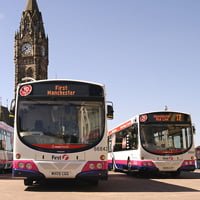
We all make use of the services provided by transportation companies. For example, you will probably have caught the bus into town or travelled on a school bus or made an intercity journey by train. Some of you may have travelled on a super green energy-efficient tram or used a Park & Ride bus service.
FirstGroup plc (known as First) is the UK’s largest surface transportation company. It has revenues of over £5 billion a year. It employs over 137,000 staff throughout the UK and North America and moves more than 2.5 billion passengers a year.
- First is the largest UK rail operator carrying almost 275 million passengers every year. This is one quarter of the passenger network. First operates rail passenger services, which include regional, intercity and commuter services such as First Great Western, First TransPennine Express, First Capital Connect, First ScotRail and Hull Trains.
- First is Britain’s largest bus operator running more than one in five of all local bus services. A fleet of nearly 9,000 buses carries around three million passengers a day in more than 40 major towns and cities, such as Manchester, Leeds and Glasgow.
- The company also operates First GBRf, a rail freight business and the Croydon Tramlink network which carries almost 26 million passengers a year.
- In North America, First is the largest provider of student transportation carrying nearly 4 million students every day.
First is the leader in providing reliable, safe, innovative and sustainable transport services. Although First is a global business, it aims to be local in its approach. This means that local issues are dealt with by people that largely live and work in that location. This ensures a clearer understanding of what needs to happen and a more prompt response.
External influences
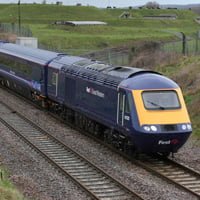
Running a business would be simple if the directors and managers only had to think about what went on inside the business. They could concentrate on internal decisions, such as determining routes, timetables and operating buses. However, business planners have also to understand what goes on outside the business.
Businesses are able to identify external changes that may affect it by carrying out a PESTEL analysis. This is a business tool in which each of the letters in PESTEL describes a type of change that takes place in the external business environment.

Many of these external changes may be outside the control of the company, for example, new government legislation. Some changes may present a threat to the business, such as a competitor using new or improved technology.
Social changes may bring opportunities, for example, migrant workers bringing new skills to the employment market. Environmental impacts, such as those caused caused by carbon dioxide (CO2) emissions or the management of waste, are of particular concern to businesses like First.
Business strategy
A business must assess what external changes are likely and which it needs to react to or take advantage of. Business planners can then create strategies to help the business respond effectively. We use the term “business strategy” to refer to a plan for a group of related products. First”s strategy relates to its transportation plans and takes into account all of the PESTEL factors in its environment.
Political and economic factors
Political
Transport services are at the heart of the UK economy – moving people to work, home and school, and goods to households and businesses. In the 1980s, the government started to privatise bus services in the UK. It believed that allowing private firms to compete to run bus services would keep prices low and ensure companies would try harder to give customers what they wanted. The result has been more efficient, innovative and sustainable bus services.
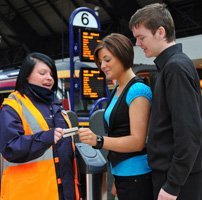
Government operates at two levels – national and local. First believes in providing local solutions, therefore it concentrates on working closely with local government. For example, it provides a service to local schools and plans bus routes that are convenient for elderly people.
A key government policy affecting all transport services relates to the reduction of CO2 emissions. The UK government has signed an international treaty the Kyoto Protocol. Countries which sign the agreement intend to reduce the emission of harmful gases. This can succeed only through partnership with business. A good example of this is the government initiative to encourage more children to use bus services rather than travelling to school by car. This will help to reduce carbon emissions. First is actively encouraging people to use the bus instead of their cars.
Climate Change Strategy

First has produced a Climate Change Strategy that shapes every action the company takes. This is part of First’s vision – to ‘Transform Travel’. It wants to change how people feel about public transport by delivering the highest levels of service and customer satisfaction. This involves recognising its responsibility to reduce CO2 emissions to as low a level as possible.

Tram, bus and rail travel create less pollution than other forms of transport, but there is still room to improve. Key elements of First’s Climate Change Strategy include:
- improving the fuel efficiency of its vehicles
- purchasing vehicles with greater fuel efficiency
- using alternative fuels, such as biodiesel
- operational improvements through driver training and new technology to monitor driver performance
First aims to reduce its CO2 emissions by 25% for its bus division and 20% for rail, both by 2020.
Economic
Businesses need to make money to continue to exist. They do this by listening to customers to ensure they keep their customers and attract new ones with good services that customers want and need.
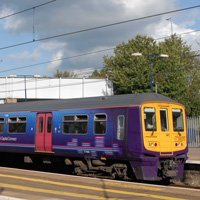
Responding to demand
It is extremely important for businesses to respond to changes in demand from customers. For example, First has responded to increased demand in the Neath valley in Wales by working closely with the Neath Port Talbot Council to run improved services.
Another good example of responding to demand is in the provision of high quality Yellow School Bus transport. Market research showed that parents and students wanted safer buses, so First designed special pilot services with the student in mind, based on the lessons learned from its US operations. Drivers are trained to work with students. Each day students step onto the same bus, can take the same seat and are looked after by the same specially trained driver. Vehicle safety features include padded seating, integrated seat belts, additional escape hatches and CCTV. First is working with the government via a specially appointed Yellow School Bus commission to investigate the possibility of rolling out specialised yellow school bus services throughout the UK.
Taxation
Another economic factor affecting First’s business is taxation. High tax on fuel encourages customers to switch from using cars to more economical bus and rail transport. Congestion charges in cities like London also encourage drivers to switch to other forms of transport. Of course, First does not want to replace the use of cars. Cars are an important means of transport and many families now have more than one car. However, many people are not aware of the environmental impact of, for example, a single person travelling to work in a large ‘gas-guzzler’ car.
First’s approach is to complement rather than compete with the car. First seeks to make it easy for people to switch between public transport and private car journeys. For example, in major cities where parking is inconvenient or expensive, First makes public transport easily available through its Park & Ride schemes.
Social and technological factors
Social
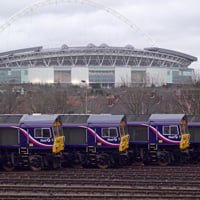
Social changes may have a major impact on business:
- The number of older people in the UK is rising. There are more people with bus passes in this country than ever before. The passes mean that users travel free, as the local authority pays First for providing the service. Many elderly people prefer to travel by bus because it is convenient and safe.
- Society’s habits and tastes are changing. People are more aware of the importance of the environment and becoming ‘green consumers’. Green consumers prefer goods and services that are ‘environmentally-friendly’ and which have less impact on the environment. The green consumer, for example, prefers to travel by bus or train than by air or in a large car.
- People are now more mobile and travel more.
Statistics produced by the Department for Transport in 2007 pick out some of the major trends. These statistics show a positive picture for First. The market is growing and more people are realising the benefits of a more environmentally-friendly form of transport.
Technological

Businesses are continually developing new technologies to provide the best solutions for the market place. Intelligent companies find out what the most appropriate technologies are for their businesses and use them. This is particularly true in transport.
A good example of this is in the provision of buses that lower the floor for easy entry. These provide better accessibility for disabled and elderly people. First has invested heavily to meet government targets for the provision of low-floor buses.
New developments
In 2006 First introduced ftr this is text shorthand for ‘Future’. These are state-of-the-art articulated vehicles that look like trams but have the flexibility of a bus and use normal roads. First has set up schemes using these vehicles in partnership with local authorities. First provides the bus service and the local authority the infrastructure, such as new road layouts and bus shelters. Ftr vehicles are capable of carrying more people per journey, so fewer bus journeys are necessary. They are also more popular with customers resulting in fewer car journeys. This reduces the amount of fuel used, reduces CO2 emissions and means less impact on the environment.
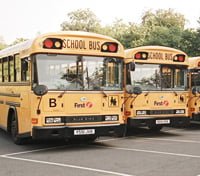
In FirstGroup’s rail division, First ScotRail has set up ground-breaking alerting services for passengers, JourneyCheck and JourneyAlert. These enable passengers to receive up-to-date train information by text or email. These services provide a convenient way of letting people know if there are delays or alterations to train times so they can plan their journeys accordingly.
Other technological solutions include the use of prepaid Smart cards to make payment on buses easier and faster.
Environmental and legal factors
Environmental
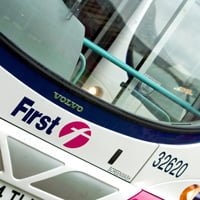
Today the environment is perhaps the most important external influence on any transport service. There is overwhelming evidence that human activity is contributing to climate change. Government, consumers and businesses all want to see better environmental management. In 2007, First set out its Climate Change Strategy. The strategy sets targets to reduce CO2 emissions in the short and long term along with plans to achieve these targets.
The strategy identified some of the risks of climate change. These included the vulnerability of road and rail infrastructure to flooding and storm surges along the coast. It identified ways of managing these risks, for example, by working with transport network providers to monitor and maintain roads and rail. The strategy also identified opportunities. For example, First has set out ambitious targets of reducing its CO2 emissions from its bus and rail divisions by 25% and 20% respectively by 2020. This gives First a clear advantage over itscompetitors.
Legal
Many changes in the law stem from government policy. Many of these laws are Europe-wide, for example, the standards for bus transport emissions. First makes sure that all its buses meet these requirements. Legal changes that affect business are closely tied up with political ones. First has to anticipate and prepare to meet future legal changes. From 2010, as part of an initiative called Carbon Reduction Commitment, First and other companies will need to buy carbon credits. These credits will permit companies to generate specific quantities of carbon emissions. First is already preparing a budget to do this and is setting out clear plans for anticipating how much CO2 it will produce after 2010.
Conclusion
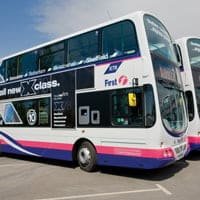
It is possible to see PESTEL factors as threats. However, First prefers to see them as opportunities. Social trends are creating increasing numbers of older passengers seeking comfortable easy-to access buses. Government pressure is encouraging more and more individuals (particularly on school runs) to use public transport. Many people are seeking a ‘greener’ form of transport. A detailed PESTEL analysis helps First to make appropriate plans to rise to the challenges of a changing environment. First is able to move forward with confidence and grow its business.
